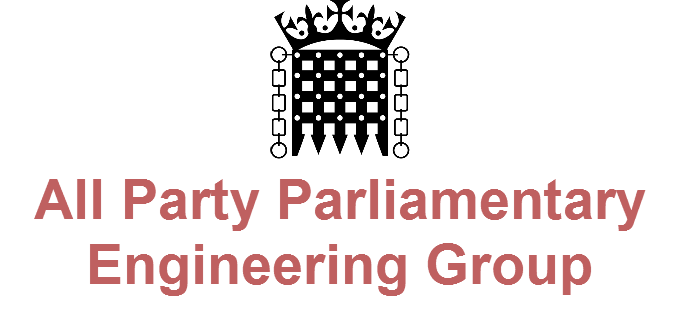22nd January 2020
The Changing World of Nuclear
Discussion over lunch in the Cholmondeley Room, House of Lords
Chair – Professor the Lord Broers
Speakers:
- Julia Pyke – Director of Financing and Economic Regulation at EDF Energy
- Mike Roberts – Principal Nuclear Safety Assessor at Atkins / SNC-Lavalin
The Lord Broers, Chairman of the group, began by thanking everyone who attended and discussed the importance of modern, forward thinking engineering. He highlighted the young people in the room and the role that they can play in tackling the industry’s growing challenges.
Lord Broers introduced our distinguished speakers.
___________________________________________________________________
Julia Pyke – EDF Energy
As SZC Director of Financing and Economic Regulation, Julia is currently working with the Government to identify an innovative way for Sizewell C to be funded. This is to ensure that the plant runs at best value for electricity consumers, as well as investors.
Prior to joining EDF Energy in 2017 to develop Sizewell C, Julia was Head of ‘Power and Renewable’ for the UK, United State & Europe, at Herbert Smith Freehills LLP (HSF). Whilst at HSF, Julia led a cross-practice team advising Hinkley Point C throughout its investment process, until its final investment decision in 2016.
Her experience has seen Julia become a member of the CBI Energy and Climate Change Board, a Fellow of the Energy Institute and member of the advisory board for Business in the Community – East of England.
Addressing the room, Julia began by highlighting that today, around 20% of the UK’s current electricity demand is generated by nuclear power, and this is around half of the UK’s low carbon electricity. All of the UK’s existing nuclear stations will turn off over the next decade, other than Sizewell B, which provides around 3% of current need. The UK needs to at least replace these existing stations if the UK is to meet its net zero commitments.
To understand the carbon emitted by different electricity systems, Julia implored guests to download app: ‘Electricity Map’. Julia’s demonstration of the app highlighted that some countries benefit from geography which gives them enough hydro or geothermal power. However, of those countries without geographical good fortune, the developed countries which have a consistently low carbon output from their electricity systems, use a mix of nuclear and renewable.
Turning to her own experiences at Sizewell C and Hinkley Point C, Julia dispelled some of the misconceptions of nuclear power and its volatility. Despite headlines, nuclear power is the safest way of making electricity (OECD). Strict regulation has supported the safe production of nuclear energy in the UK for more than 50 years. Whilst there is carbon production and carbon use in site construction (as for any major construction) this is off-set within a few months of the plant starting operations.
To reduce costs, Julia proposed the solution to simply ‘copy’ Hinkley Point C, which has a detailed design approved by the UK regulator. It was agreed that research into alternative plants should continue, but whilst there is a safe and functioning model available, this should be reproduced at other locations in the country. This would minimise unexpected costs accrued during unpredictable planning and development of new projects.
Nuclear is a part of the future electricity mix, working with renewables, to ensure a clean and cost effective system 365 days of every year.
Julia rounded up her talk by reminding guests to look further than the media and more at facts. To the future generation, Julia echoed sentiments from the Chair’s opening remarks; that the young people in the room should look to the nuclear industry for high quality, high skilled jobs, which are rewarding on many different levels and which help solve climate change.
Mike Roberts – Atkins / SNC-Lavalin
As a Principal Nuclear Safety Assessor, Mike Roberts delivers nuclear safety assessments for new nuclear stations, existing generating stations, decommissioning sites and defence sectors. With a Masters in ‘Physics and Technology of Nuclear Reactors’, Mike is also Chartered with the Institute of Physics.
Until recently he was Chair of the Nuclear Institute’s Young Generation Network (YGN), leading the Institute’s work for those under the age of 37. In this role he delivered a range of seminars, technical tours, STEM activities and networking events, engaging with various international YGN networks. He was also one of the lead organisers of the European Nuclear Young Generation Forum, the largest youth nuclear conference with 32 countries in attendance.
Mike’s determination to enthuse and promote the next generation of young engineers, was channelled throughout his talk. He began by acknowledging the diversity in the room and during questions, stressed to the young professionals of the benefits of finding a mentor to help them progress in the industry.
Next, Mike discussed the goal of achieving Carbon Neutral by 2050 and the need to ‘find real life solutions to real life problems.’ However, to do this, nuclear energy cannot be the sole focus.
As important as it is, and should continue to be pursued, tackling building heating and transport emissions are also a must. In parallel with nuclear and renewable energy production, carbon capture, the banning of carbon producing cars and making changes to over 27 million homes and buildings, is essential in reaching all climate targets. Supporting technologies such as hydrogen fuel will require large-scale hydrogen production through means such as electrolysis and steam-methane reforming.
Mike also discussed the low technical risks of nuclear technology – but equally recognised that it has high commercial risk. The need for continuing investment is essential and it is often the case that projects stall from difficulties in attracting private investment. He recognised a potential move to RAB investment model and collaboration with the Government as a solution.
In full circle, Mike concluded with a reflection of the tools and solutions needed to make positive changes and advancements. Engineers, new and established, should embrace new technologies, encourage future engineers and make industry commitments to continue to be more inclusive.
Questions and Answers
Q1 – The Lord Ravensdale
Question – How would it be possible to reduce costs that are currently accrued during nuclear energy production?
Answer – Julia Pyke
Julia argued that by copying existing models, with the same designs and team, this would automatically reduce costs. She suggested that it is not always necessary to produce something that is the first of its kind. By imitating the ‘tried and tested’ model, the industry will save both time and money.
Q2 – Ross Deacon – Thales
Question – How can we modularise nuclear production?
Answer – Mike Roberts
It was discussed that modulorisation of nuclear build projects is already in practice. Mike also referred to Small Modular Reactor (SMR) projects being undertaken which could change what the nuclear industry can offer. However, Mike referenced the financial difficulties associated with funding large-scale nuclear power plants, which may make smaller SMR technologies attractive. Hence the reason why countries turn to importing certain forms of energy from overseas. Mike argued that the UK should look to alternative means of production to support nuclear energy, renewable energy and the country-wide move to carbon neutral.
Answer – Julia Pyke
Julia largely agreed with Mike’s assessment but proposed that additional costs could be avoided by copying working models.
Q3 – James Gibson – Abingdon School
Question – As an expensive industry, why doesn’t the government inject the necessary finance to make the industry more sustainable and sufficient? Especially when taking into consideration the industry’s importance and the worsening climate crisis.
Answer – Julia Pyke
Julia would gladly welcome more government investment and Mike nodded in agreement. They both appreciate the difficulty of allocating budget across the country and emphasised the need for alternative forms of investment.
Q4 – Simone Schmieder – Wood Thilsted Partners
Question – Given that 95% of nuclear waste is not dangerous, what should be done with the remaining 5% which is? And; How will this impact the future generations who are exposed?
Answer – Mike Roberts
One way to take toxic waste and protect the environment and people, is to look at geological disposals. Mike reasoned that if submerged deep enough, nuclear waste which is harmful, is less likely to have an impact. He took into consideration how nuclear energy has now been in use for over 60 years and that industry produced waste has been proportionate and dealt with cautiously. He also explained that there are projects looking at addressing the solutions in more efficient ways and that this would come about soon. The room raised suggestions of alternative, for example under water and space disposal, which have been investigated before and not identified as a feasible disposal route.
Q5 Ana-Maria Miron – Excelsior School
Question – What would each speakers advice be to young women who have or might decide to look to the industry for a career?
Answer – Julia Pyke
It is a great career choice exclaimed Julia. It’s a 50:50 representative industry, where you can see the world and connect with loads of interesting people. Julia also discussed how the industry isn’t always obviously attractive or easy to understand. In order to counteract this, Julia mentioned how EDF are looking at producing specific advertisement with celebrities who have a background in engineering.
Answer – Mike Roberts
Mike agreed and suggested that anyone, male or female, looking to get into the industry should seek out a mentor. This mentor should be a few steps ahead of themselves in their career, as this would allow them to see and understand what it’s really like to be in engineering.
Q6 Brigadier Richard Bennett – Defence College of Technical Training
Question – How will the UK’s decision to leave the European Union, especially institutions such as Euratom, impact the country’s engineering standing and access to research and funding? Do you think these institutions will be replaced?
Answer – Both
Both Julia and Mike agreed that they expect some changes, but that the industry will remain largely unchanged. To tackle the big engineering issues facing the world, exchanges of funding, research and people must continue.
Q7 – Egor Kaygorodov – KCL Maths School
Question – Where does the UK sources its Uranium from and are we dependent on other country’s production?
Answer – Mike Roberts
Mike discussed how the UK sources it’s Uranium from places such as Australia and countries across Africa, as the UK doesn’t have uranium resources itself. He went on discuss that unlike the oil industry, where there are numerous political issues and much higher intercountry dependency, nuclear production is less dependent with few political caveats.
Answer – Julia Pyke
Julia contributed that nuclear energy production is very much like other sectors and industries, where it isn’t always possible to manufacture every component for its production. She also mentioned how it may become possible to create a UK supply chain through recycling and reusing materials.
_______________________________________________________________________________________
The Lord Broers closed the discussion, by thanking our guest, excellent speakers and organisers.


